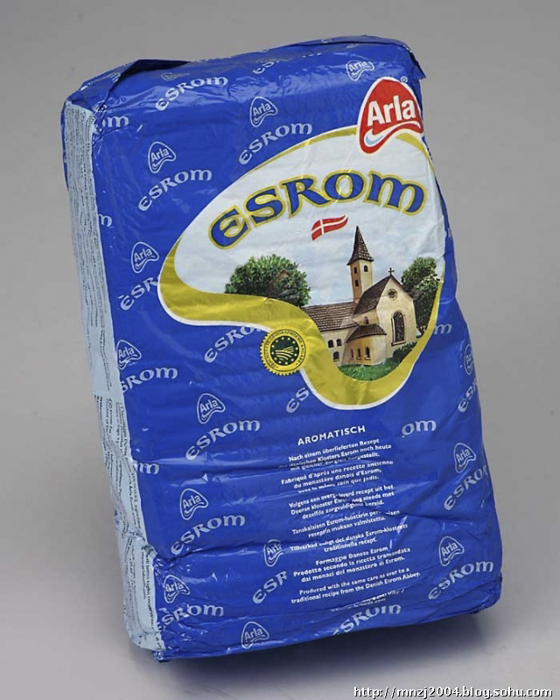Esrom Info
Esrom, The Perfect Cheese for a Picnic
There is a good chance that you may have never heard of, or tasted, the Esrom Cheese from Denmark but that is about to change.
If you like a soft buttery cheese with a bit of character, then this would be the one for your next picnic basket, or any day on the table for that matter. It's the kind of cheese that just seems to disappear when you put it out. This is one that will go fabulously with a nice Euro style lager (Sorry Bud!) or even a darker style bock beer.
Esrom is not a new cheese and has its roots in the monastic communities of Europe many years ago.
This is a cheese I remember fondly from my earlier years. When my sister and I would come home to visit after college, Saturday lunch was always about cheese, and since my dad was the one responsible for that stinky quadruple wrapped (thank you Mom!) Limburger in the back of the fridge, we had to come up with a good compromise. It was the Esrom that kept the peace!
We all loved its soft texture and warm milky flavor plus the gentle aroma from the rind.
What is Esrom?
Esrom is made in varying formats from 47-57% fat (measured only as dry matter after discounting moisture). This will give us the option of making it from a range of milks.
The cheese has a thin, supple, yellow to yellowy-orange edible rind with a clean, almost dry, thin and uniform yellowish brown to reddish brown outer skin.
The Smell is mild, acidic, aromatic with hints of surface ripening. This aromatic from the surface ripening can become dominant as the cheese ages.
Esrom can range from very mild to a cheese with attitude. It can be ready as early as 2 weeks and is rather mild when young (4 weeks) but it can get quite pungent with age (months of aging). Much of the aromatic aspect can be controlled by how much of the washed rind is developed.
The History of Esrom
Esrom is a trappist-style traditional, creamy, semi-soft cheese made from cows milk. The cheese is named after an abbey where Cistercian monks first made it in the 12th century near the village of the same name. The recipe was rediscovered in the 1930s and since then has achieved quite a bit of popularity.
The cheese was developed by the monks of Esrom Monastery. In 1140, the Benedictine monks tried to run an abbey at Esrom in northern Denmark. They failed and the French took over the buildings leaving the monks to produce cheese under French rule. The Abbey was very prosperous and came to own much land, until the Reformation came to Denmark in 1536. In 1559, the monks were pushed out of the Abbey and the cheese ended with the departure of the monks.
It was then revived again by the National Experimental Dairy in the mid-1930s. Production started at Midtsjællands Herregårdsmejeri
and later at other dairies. During the wars it disappeared for awhile but was revived again with the new name of Esrom in 1952.
































